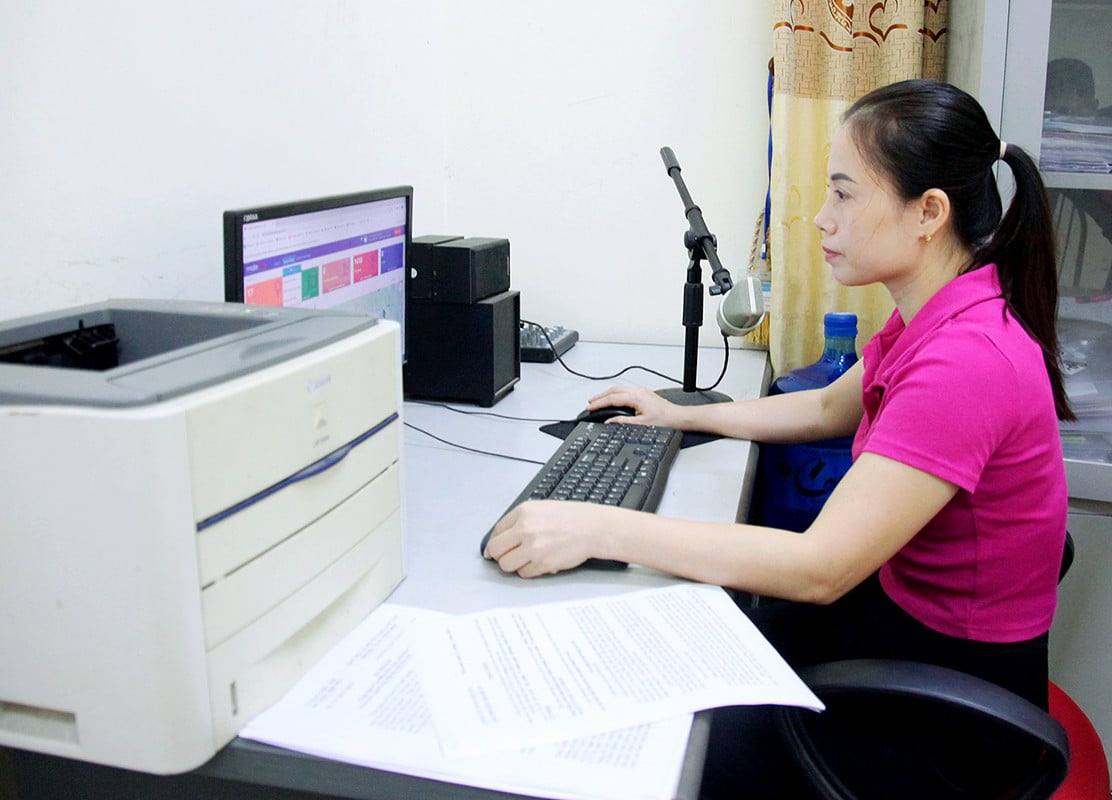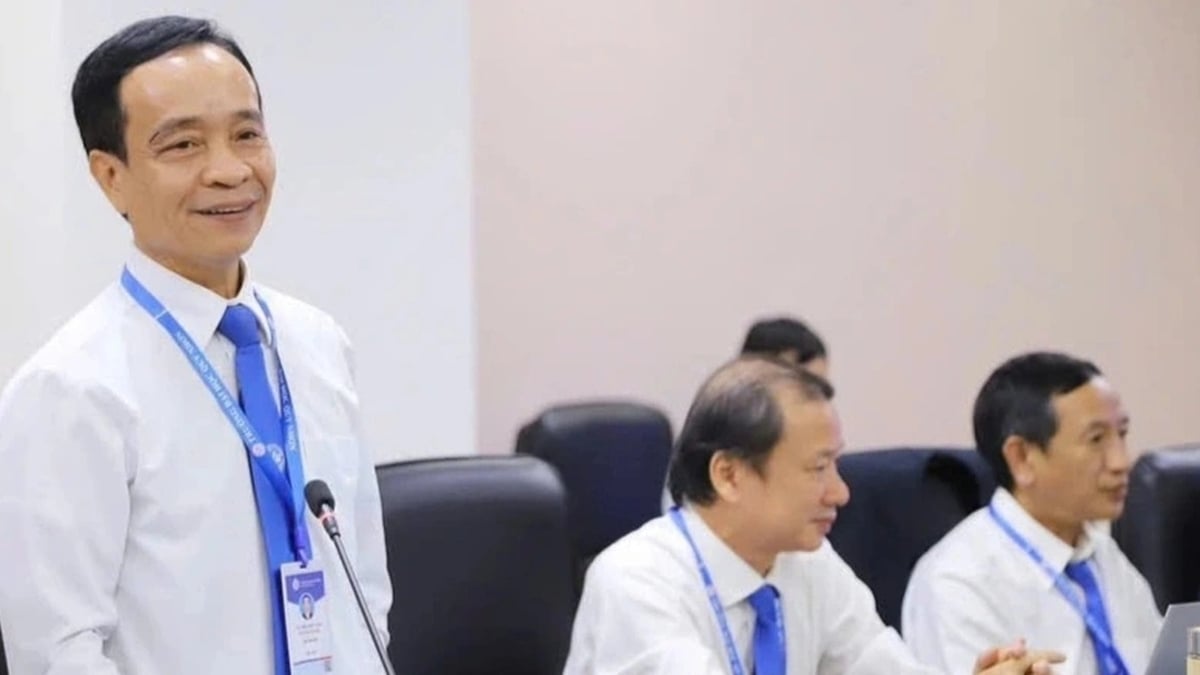Thereby contributing to meeting people's need for information access in the era of technology 4.0.
Smart broadcasting application helps Hop Hoa Town Radio Station, Tam Duong District improve operational efficiency. Photo: Duong Chung
No matter where you are, with just a computer or smartphone connected to the Internet, and with a few simple steps, Ms. Phan Thi Nguyet, the officer in charge of broadcasting in Hop Hoa town, Tam Duong district, can set up an automatic broadcast schedule for the town's radio station.
Ms. Nguyet said: "From 2022, Hop Hoa town has invested in installing 14 smart radio clusters in 7 residential areas; integrated digital equipment, 4G sim..., so information is transmitted much faster and more effectively.
Compared with the previous wired radio system, smart radio has many outstanding advantages such as no need for wires, compact, easy to control, operate equipment, clear sound quality; easy to manage, monitor, and centrally control; better sound quality, no interference, mixed waves...
Creating, controlling, and recording each news broadcast becomes easy and quick… Thereby helping to save time, human resources, and effort during the operation process.”
Tho Tang Town is one of the leading units of Vinh Tuong district in digital transformation of radio stations applying information technology - AI telecommunications. The town's radio station is applying information technology to automatic operation and production of radio programs on the 4.0 technology platform; digitizing programs...
Manager of Tho Tang Town Radio Station Bui Trung Huy said: "To improve the effectiveness of information and communication work, in 2023, the Town Radio Station will receive support from the Department of Information and Communications to invest in 15 loudspeaker clusters. Currently, the smart broadcasting system is integrated on the old system to operate in parallel.
The smart radio system is easy to manage, simple to operate, saves time and manpower; users can manage devices through smart applications, helping to detect broken devices without having to go to the speaker cluster location to check.
At the same time, the system also has an application installed on mobile devices that allows management and control of the entire broadcasting system anytime, anywhere; very convenient for controlling radio programs, relaying to higher-level stations at the right time frame...".
The broadcasting system in Vinh Tuong district covers 100% of communes and towns; 28 grassroots radio stations with 680 clusters and 1,360 loudspeakers distributed in 178 villages and residential groups.
Implementing digital transformation, the district radio station and grassroots radio stations have used IP technology to transmit and receive radio news via the internet and 3G/4G waves. Smart radio is integrated on the old system to operate in parallel, helping to save investment costs.
Thanks to the integration of AI artificial intelligence, the smart broadcasting software can automatically recognize, convert text to speech, and transfer audio files to the speaker system without the need for an announcer to record. Good sound quality, can directly broadcast to the central, provincial, and district radio systems, avoiding interference and interference.
The gradual application of information and telecommunications technology to smart radio stations is an inevitable trend in digital transformation. Currently, in the province, there are a number of communes and towns that have invested in smart radio systems such as Lien Chau commune (Yen Lac), Vinh Thinh commune (Vinh Tuong), Hop Hoa town (Tam Duong)...
Through practical implementation, the smart broadcasting system has been effective, affirming its outstanding advantages due to the application of new technology; gradually forming a database, digitizing grassroots information sources; overcoming the limitations of wired broadcasting (wired) and FM radio broadcasting (wireless); meeting the requirements of providing propaganda information to the people; serving the State management of grassroots information.
To promote the development of digital infrastructure and improve the quality of operations of the grassroots broadcasting system, functional sectors and localities need to allocate funds to invest in upgrading and converting wired radio stations and FM radio stations, and at the same time converting to a broadcasting system applying information technology and telecommunications.
Improve the professional expertise of the staff in charge of radio stations, contributing to improving the efficiency of grassroots information activities; strive for 100% of grassroots radio and broadcasting systems to apply information and telecommunications technology by 2025.
According to Minh Thu (Vinh Phuc Newspaper)
Source: https://vietnamnet.vn/hieu-qua-tu-chuyen-doi-so-trong-hoat-dong-truyen-thanh-co-so-2308619.html




















































![[Maritime News] More than 80% of global container shipping capacity is in the hands of MSC and major shipping alliances](https://vphoto.vietnam.vn/thumb/402x226/vietnam/resource/IMAGE/2025/7/16/6b4d586c984b4cbf8c5680352b9eaeb0)













































Comment (0)